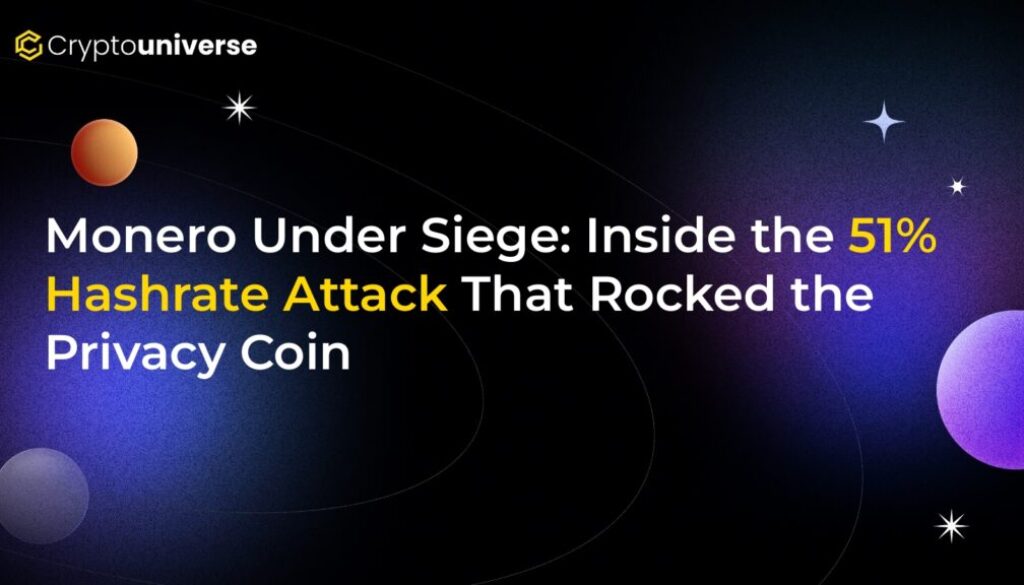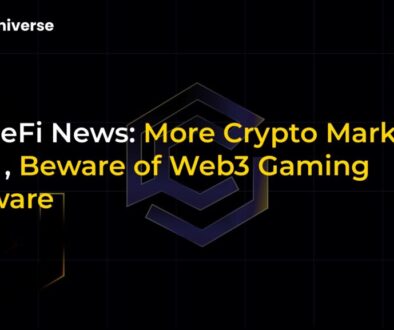Monero Under Siege: Inside the 51% Hashrate Attack That Rocked the Privacy Coin

A Privacy Giant on Shaky Ground
Monero (XMR), a titan in the world of privacy-focused cryptocurrencies, is currently navigating a severe security crisis that has sent shockwaves through its community. On September 14, 2025, the network was hit by a staggering 18-block reorganization, an event that has cast a dark shadow over its reputation for security and decentralization. This disruption was orchestrated by the Qubic mining pool, which now reportedly controls over 51% of Monero’s total hashrate, giving it the power to rewrite transaction history.
This incident raises critical questions about the network’s integrity, the real-world risk of double-spending, and whether Monero’s core promise of a decentralized, private digital currency can withstand such a direct assault.
What is a Blockchain Reorganization? The Tale of Rewritten History
Imagine you’re reading a book, and just as you finish a chapter, someone snatches it, rewrites the last 18 pages, and hands it back. The original events are gone, replaced by a new version of reality. This is exactly what a blockchain reorganization, or “reorg,” feels like. It’s a hostile event where a malicious actor uses immense computing power to create a longer, alternate version of the blockchain, forcing the network to discard the original chain and adopt the new one.
In Monero’s case, the attack began at block 3,499,659, invalidating approximately 118 transactions in just 43 minutes. For users whose transactions were suddenly erased, the experience was jarring and sowed deep uncertainty. The foundational belief that a confirmed transaction is final was shattered.
The Attacker: Qubic’s “Economic Attack” on Monero
This wasn’t a subtle hack or a software bug. It was a bold demonstration of power by the Qubic mining pool. By amassing over 51% of the network’s hashrate, Qubic gained majority control, enabling them to execute what many in the community are calling an “economic attack.” This level of control grants an entity the power to:
- Double-Spend: Spend the same coins multiple times by reversing the original transaction.
- Censor Transactions: Prevent specific transactions or addresses from being included in blocks.
- Disrupt the Network: Create chaos and undermine trust in the entire ecosystem.
Described by some as a “takeover demo,” Qubic’s actions seem less about immediate theft and more about proving Monero’s vulnerability—a chilling message to the entire crypto space.
A Puzzling Price Rally Amidst the Chaos
In a bizarre twist, as the network’s security was being openly questioned, Monero’s price didn’t collapse. Instead, it surged from $287.54 to $308.55, a 7.4% increase in a matter of hours. This counterintuitive rally highlights the often-unpredictable nature of crypto markets. However, this price action starkly contrasts with the growing sense of alarm among seasoned users and experts.
Crypto analyst Vini Barbosa captured the sentiment perfectly, stating:
“I don’t find the Monero network reliable right now. I’ll refrain from accepting XMR until this matter is rectified.”
Confidence Crumbles: Exchanges and Experts Sound the Alarm
The most telling sign of lost faith came from cryptocurrency exchanges. Kraken, a major exchange, reacted swiftly by dramatically increasing the number of confirmations required for XMR deposits to 720 confirmations. The standard is typically around 10. This move is a clear vote of no confidence in the short-term stability of the Monero blockchain, forcing users to wait hours instead of minutes for their funds to be credited.
This incident serves as a stark reminder for all Monero users: until a robust solution is in place, it is crucial to wait for a much higher number of confirmations before considering any transaction final.
Fortifying the Fortress: Can Monero Defend Itself?
The Monero Grapples with Security Crisis Following Massive Blockchain Shift has forced its developers and community into urgent action. The core challenge is to enhance security without sacrificing the decentralization that defines Monero. Several potential solutions are now on the table:
- DNS Checkpoints: A system to hard-code certain blocks as final, preventing reorgs beyond that point. However, this introduces a degree of centralization, which goes against Monero’s ethos.
- Merge-Mining: Allowing miners to mine Monero and another cryptocurrency simultaneously, potentially increasing the overall hashrate and making a 51% attack more expensive.
- ChainLocks-Style Defenses: Implementing a system where a supermajority of nodes can finalize blocks, making them nearly impossible to reverse.
The path forward will require careful debate and a strong community consensus to navigate the trade-offs between security, decentralization, and privacy.
A Defining Moment for Monero
This 18-block reorganization is more than just a technical glitch; it’s a fundamental stress test for one of the world’s leading privacy coins. The attack has exposed a critical vulnerability, forcing a difficult conversation about the future of Monero’s security model. How the community responds—how it chooses to adapt, innovate, and rebuild trust—will ultimately determine its legacy in the ever-evolving cryptocurrency landscape. For Monero, the stakes have never been higher.


